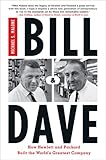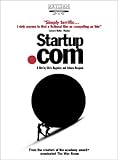
Once upon a time, tech entrepreneurs were motivated by a desire to build something of lasting value: a better mousetrap, a great company, or to change the world. In 1938, Bill Hewlett and Dave Packard sold eight oscilloscopes to Walt Disney, who was making
Fantasia. Seventy years later, the successor business-to-business instrument division is at the core of
Agilent.It always helped to have good timing — either by being lucky or making your own luck. HP was there when Disney (and soon the war effort) needed electronic instruments. Fairchild bet big on silicon just as the military was shifting from tubes to transistors. Intel took the integrated circuit to the next level with its
4004 microprocessor, and bought back the rights from
Busicom. Steve Jobs and Steve Wozniak went to the
Homebrew Computer Club and saw how the microprocessor would enable personal computing.
In the original waves of tech startups, going public meant generating enough of a track record of revenues and profits that investors could reasonably hope that your stock would go up. Those (relatively rare) IPOs meant a few tech entrepreneurs got to be fabulously wealthy and endow vanity foundations (that today seem likely to do less good for society than their companies did). But the wealth was not the thing, at least until the hippies of Apple Computer created
dozens of millionaires with their IPO, and later IPOs from companies like Sun, Oracle and SGI permanently changed the Silicon Valley mentality.
However, a much larger number of companies didn’t change the world, or create large (or even small) fortunes. Instead, they provided value to their customers, income and training to their employees, and a chance to have a vocation of meaningful work. It’s a standard power law distribution: if you buy a lottery ticket, you’re far more likely to win $5 than $50 million.
This more typical path was my own experience. We didn’t have an exit strategy because I hadn’t heard of the term when we started the company in 1987. Every penny that I made off the company came out of positive cash flow which (without the benefit of reduced capital gains taxation) is a much harder to way to throw off profits. But we produced good quality software for 17½ years before
closing the doors in 2004.The dot-com bubble seems to have changed things. Companies went public without profits and sometimes barely with revenues. There was a gold rush mentality and people who weren’t really qualified (either by talent, ethics or disposition) to build a real company were looking for a get rich quick scheme. This has continued into the current Web 2.0 era, as I was reminded when I gave a presentation at USC Thursday on
Web 2.0 business modes.So the new mantra is “flip this company.” As a 2004 Business 2.0
article proclaimed
The New Road to Riches
How To Get Ahead In The Postbubble World
Build A Company Cheap. Flip It Fast. Repeat.
Flipping a company today is about selling out to a big company ina just a few years: the Holy Grail is the
$1.8 billion that Google paid for YouTube after only 18 months. However, the philosophy is similar to the dot-bomb (some say dot-con) era, companies built using this philosophy were sold to the public as a naked demonstration of the
“greater fool” school of ethics.

This may be the road to riches, but it’s not a way for entrepreneurs to create value or success (more broadly defined). This philosophy was dissected by
author Jim Collins in
a thoughtful 2000 essay. He illustrated a point using a 1985 medical equipment startup:
The real question, the essential question is this: Is your company built to work? The answer rests on three criteria: excellence, contribution, and meaning. Again, consider Cardiometrics. The company may not have been built to last, but in all of its activities, it adhered to the highest possible standards: Instead of relying on expedient studies and marketing hype, it conducted rigorous, costly clinical trials in order to demonstrate the value of its technology. And the company clearly made a significant contribution -- to the market, to its investors, and to the lives of patients all over the world. Finally, the people of Cardiometrics found their work to be intrinsically meaningful: They worked with colleagues whom they respected and even loved, and they pursued a worthy aim to the best of their ability. Built to Flip? Built to Last? Cardiometrics embodies neither of these models: It was built to work.
Today, I believe that the opportunities for startups to IPO are greatly diminished, for a variety of reasons. IT is mature with a large number of diversified established incumbents. Biotech startups have disappointed investors with both the risk and the payoff. Both types of startups lack the complementary assets such as distribution or economies of scope to fully capitalize on their innovations.
Today startups are being acquired, and sometimes a piddly little company can create a value that they will be unable to unlock on their own, but can be realized by a Google or a Cisco. But in a free economy, every excess eventually self-corrects, so if acquiring companies don’t get value, they will buy fewer companies and pay less for those that they get — or their mistakes will put them out of business.
Either way, assuming that a bad business will be bought at a good price seems like a lousy bet.
 Raising venture capital is an essential prerequisite to many tech startup business plans. While some companies — usually software or services — can bootstrap off of savings or credit cards, companies with high R&D or manufacturing costs need a sizable cash hoard before they see first revenues (let alone profits).
Raising venture capital is an essential prerequisite to many tech startup business plans. While some companies — usually software or services — can bootstrap off of savings or credit cards, companies with high R&D or manufacturing costs need a sizable cash hoard before they see first revenues (let alone profits). A friend, serial (i.e. chronic) tech entrepreneur Doug Klein, recommended The VC, a comic strip from the dot-com era. The strip rang true: as an entrepreneur during this period, Doug swears he lived each of these vignettes at some point during their fund-raising efforts.
A friend, serial (i.e. chronic) tech entrepreneur Doug Klein, recommended The VC, a comic strip from the dot-com era. The strip rang true: as an entrepreneur during this period, Doug swears he lived each of these vignettes at some point during their fund-raising efforts.
![[1985 Man of the Year] [1985 Man of the Year]](http://img.timeinc.net/time/2008/cover_photos/1985_peter_ueberroth.jpg)



![[feed]](http://photos1.blogger.com/x/blogger2/6971/993546936938810/1600/z/962294/gse_multipart3851.gif)